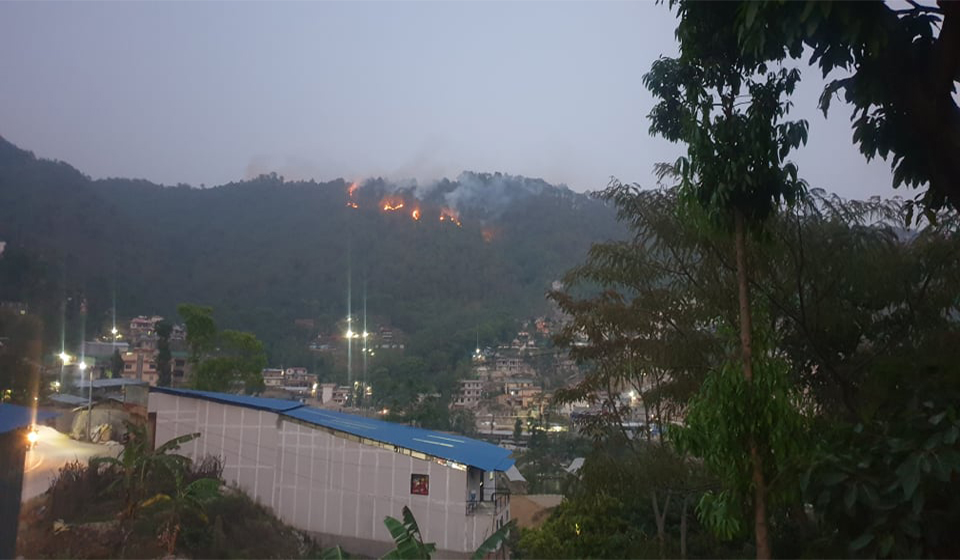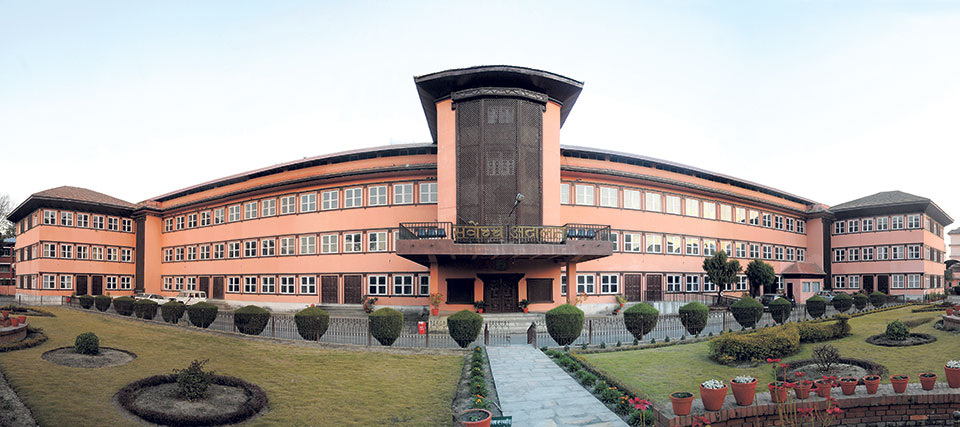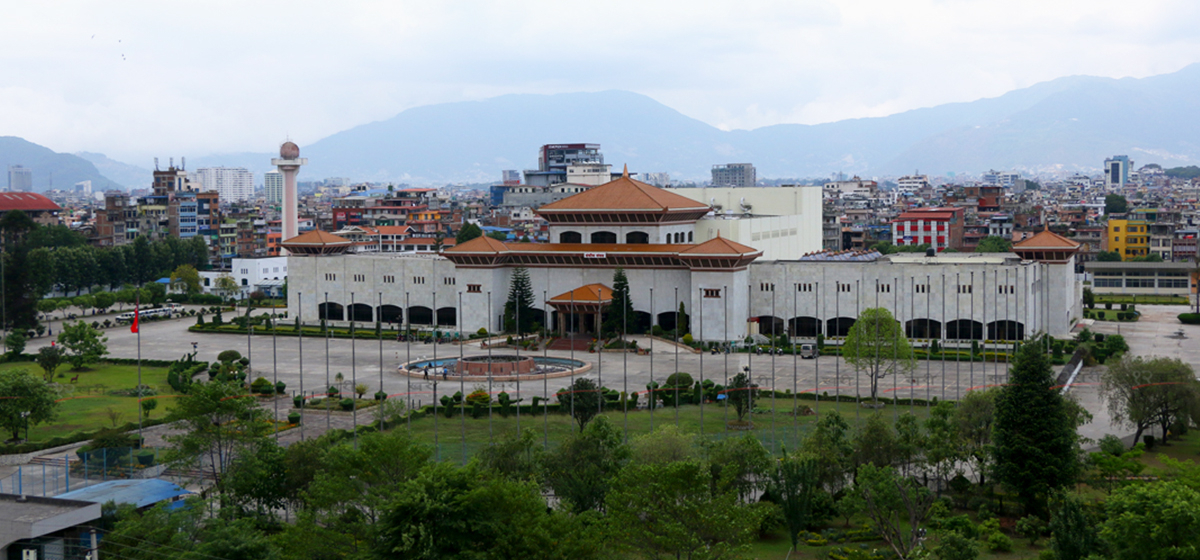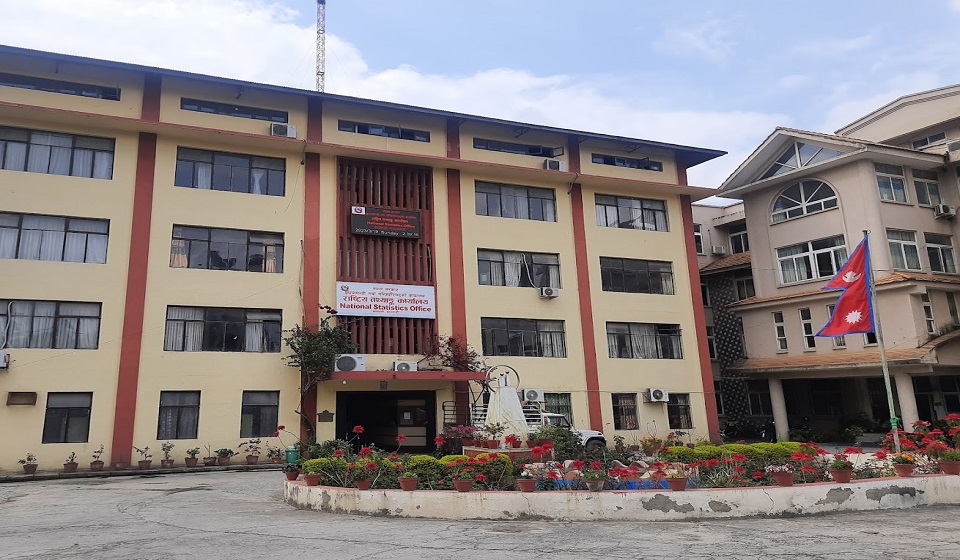
OR
Editorial
Fighting the menace of forest fires
Published On: April 8, 2024 07:09 AM NPT By: Republica | @RepublicaNepal

With the dry season almost at its peak, the incidents of wildfires have already become daily occurrences in Nepal. These fire incidents have been causing significant damage to Nepal's forests, animals, and property, putting the health of local residents at risk. Reports suggest that wildfire has started in the forest area of Kalikot district. On March 18, a massive fire broke out in the Navadurga community forest in Khandachakra municipality-5 in the district and a father and daughter who had gone to graze their goats got trapped into the fire and succumbed to burn injuries. Along with them died 45 of their goats, while six others were critically injured. This is just an incident that has come to the public through the media. A number of similar instances of forest fire do not even make it to the media. According to government data, an average of 77 people are killed every year in Nepal due to forest and other fire-related incidents. The instances of wildfire also cause financial losses amounting to several billions of rupees every year. This highlights the devastating impact of wildfires and the need for immediate action to contain them.
The onset of the dry season every year marks the beginning of wildfires in Nepal. With a few more months before the monsoon season begins, authorities must sound the alert and take necessary measures to prevent wildfires. It is essential to recognize that wildfires are preventable, and human negligence is one of the primary causes of these incidents. Smoking near vegetation, discarding cigarette butts into dry vegetation, arson, and burning dry vegetation to clear farmland are all considered causes of forest fire in Nepal. It is the responsibility of the government to ensure that individuals are aware of the dangers of wildfires and take preventive measures to minimize the risk of wildfires. Of course, the federal government has taken some measures to control wildfires, such as creating the Forest Fire Detection and Monitoring System and including various programs in the Ministry of Forests and Environment's annual programs. A number of provincial and local governments have also launched various programs to create awareness about wildfire prevention and control. However, more needs to be done to ensure that these measures are effective. The government bodies concerned must first categorize high-risk areas, focus on these areas, and prioritize the implementation of preventative measures, such as the construction of fire lines, cleaning up and repair, and the control of bushfires. Additionally, the authorities concerned must ensure that firefighting equipment, such as fire beaters, forestry rake hoes, forestry rakes, and firefighter's helmets, are purchased and distributed at the local level on time.
Furthermore, the government authorities concerned must launch awareness programs at the community level to prevent human negligence that causes wildfires. They must educate people about the dangers of smoking near vegetation, discarding cigarette butts into dry vegetation, and arson. Incentives should be given to individuals who report those who engage in activities that could cause wildfires. It is worth noting that wildfires not only cause immediate damage to forests, animals, and properties but also long-term damage to the environment. Wildfire smoke and haze rise high into the atmosphere, causing environmental pollution and compromising the health of residents. Keeping in view of the preventable loss of life and properties caused by wildfires every year, the government must take urgent action to prevent wildfires in Nepal. We cannot afford to lose any more lives, wildlife, and properties to wildfires. It is our collective responsibility to prevent wildfires and ensure a safer and healthier environment for all.
You May Like This

Boost investment in power transmission infrastructures
As Nepal strives to achieve uninterrupted power supply for all its citizens and capitalize on surplus electricity through exports, urgent... Read More...
_20201014060614.jpg)
Nepal abstains from voting as UNHRC adopts resolution against Sri Lanka's human rights record
KATHMANDU, March 23: Nepal has chosen to abstain from voting in the United Nations Human Rights Council on a resolution... Read More...

Govt should prioritize Miss Nepal: Miss Nepal Shrinkhala Khatiwada
MAKWANPUR, April 24: Newly crowned Miss Nepal World 2018, Shrinkhala Khatiwada has urged the government to prioritize the pageant as... Read More...


Just In
- Newly-elected HoR member Nembang pledges to value ballots
- Parliamentary committees call for quorum rule revision
- Third Session of Karnali Province prorogued without passing any bill
- Embassy of India in collaboration of IBN and NICCI organizes Post Investment Summit India-Nepal B2B meeting
- NEPSE rises by 25.93 points, daily turnover surges to Rs 4.80 billion
- Suhang Nembang's journey from a lawyer to a lawmaker
- Book containing speeches of Narendra Modi published in Nepali language
- NSO projects Nepal’s economic growth rate at 3.54 percent in current FY















Leave A Comment